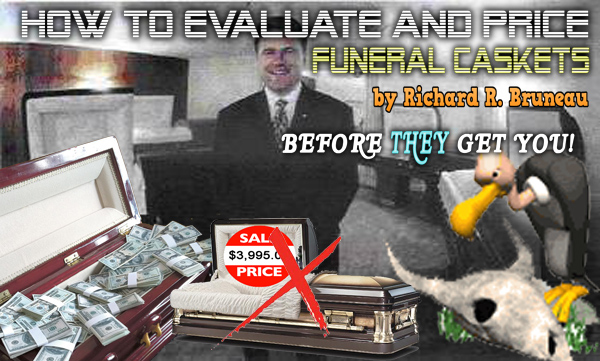

This Website Visits
This agency only works with local, privately-owned funeral homes. This means you will be dealing with a trusted member of your community, not some distant corporation only worried about a bottom line.
Which Funeral Caskets You SHOULD and SHOULD NOT Buy

Even if you've selected a funeral home with a package of services and prices you are happy with, they might still have you "over a barrel" if you are selecting your casket from them. Many are badly over-priced, and I'm going to explain how to know.

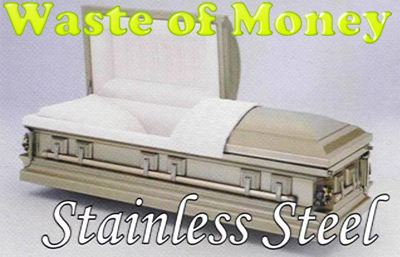
Caskets made of stainless steel, copper, and bronze are a waste of money. They do nothing to preserve a body in the ground. What is the purpose of preserving a casket made of non-corroding material when what is inside will be dust after a few decades? You only need inexpensive wood or carbon steel. You don't need a thick 18 gauge carbon or stainless steel or an expensive wood. An attractive casket of your choosing (including the color you want) should cost well under $1,700. Most funeral homes will try to get away with having you or your family purchase a casket costing $2,500 to $3,000 or more, influencing you also to think that is "normal" or even the "low end." What is NORMAL to my customers is $995.
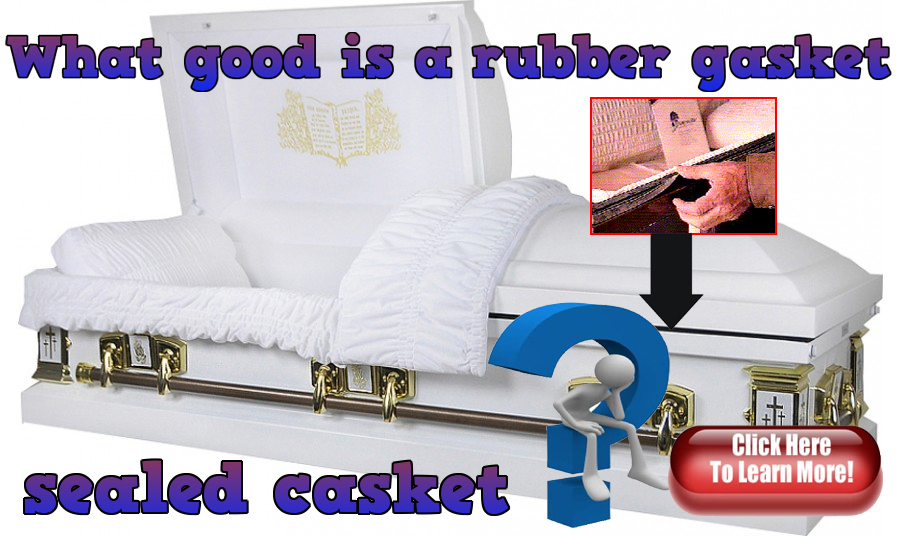
RIGHT CLICK TO GO THERE
The Value Of A “Sealed” Casket
There is nothing about the construction of caskets (or vaults) made today that prevent decay or slow down decomposition of the body in any meaningful way. It simply makes the family feel better that most of the water and air are not reaching the body. But that’s all a rubber gasket seal can do, and caskets made of wood do not even come with any kind of seal.
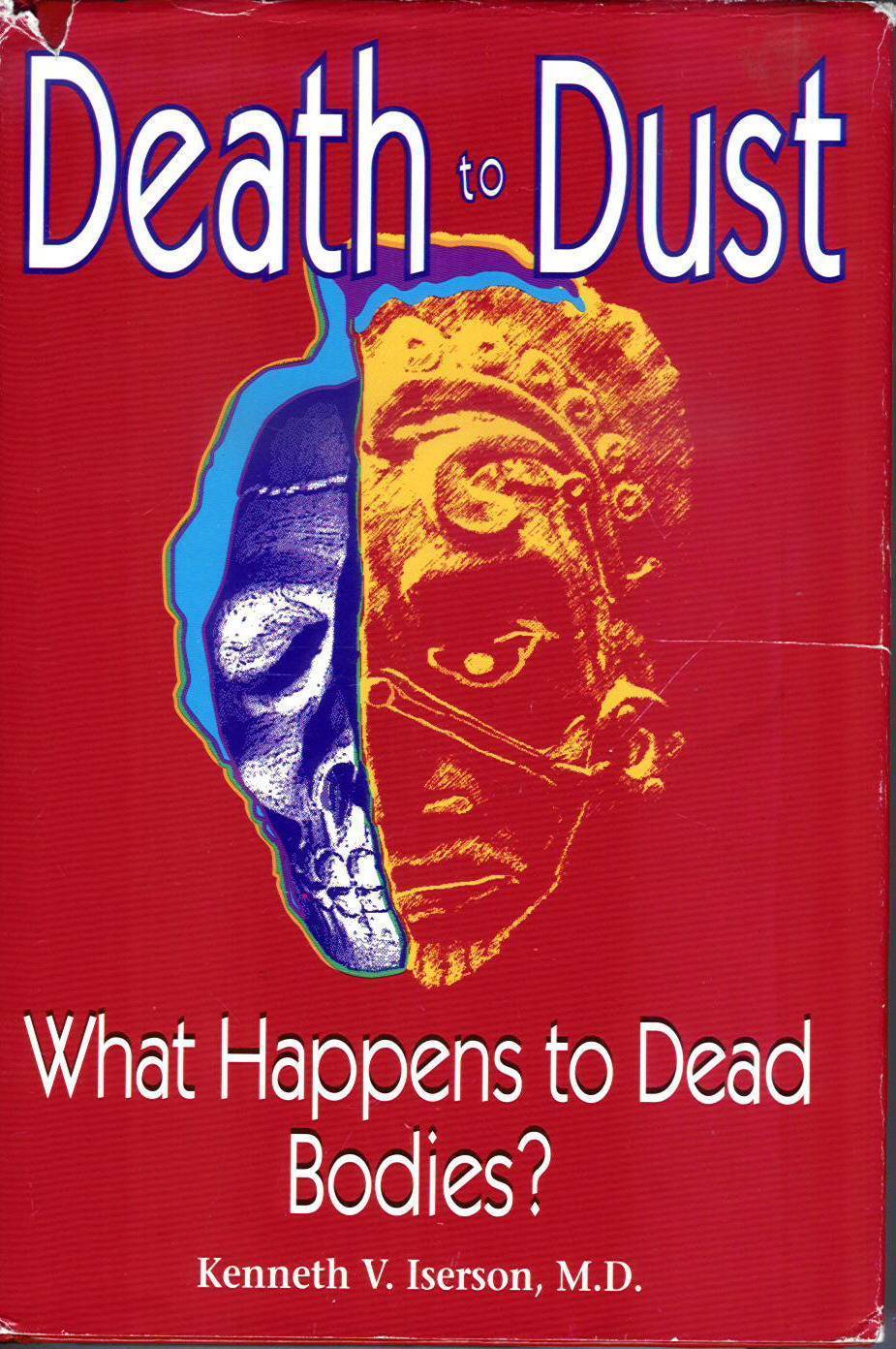
“Despite claims to the contrary, sealed caskets do not prevent a body’s decomposition. In 1975, a $500,000 lawsuit was filed in Puerto Rico alleging that a casket failed to prevent decomposition of a corpse after a 3-week interment, despite a written guarantee. The manufacturer stated that no casket can protect a body from decay ‘indefinitely.’
Funeral directors emphasize excellent sealing qualities to sell their most expensive caskets. However, Dr. Jesse Carr, former Chief of Pathology at San Francisco General Hospital, stated that an embalmed corpse fares far worse in a hermetically-sealed metal casket than otherwise. ‘If you seal up a casket so it is more or less airtight, you seal in the anaerobic bacteria—the kind that thrive in an airless atmosphere…These are putrefactive bacteria, and the results of their growth are pretty horrible…In fact, you’re really better off with a shroud, and no casket at all.”
Kenneth V. Iserson, MD, Death to Dust, p. 471
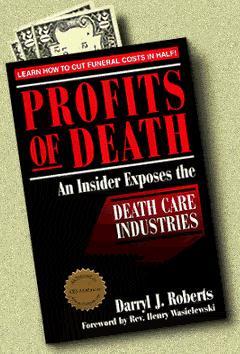
“The truth is, our contemporary funeral practices (i.e., embalming, sealed caskets, and vaults) only delay the inevitable and quite natural dust to dust, ashes to ashes progression of human decomposition. These forces of nature can be delayed for a time, but they cannot be stopped.
Still, if such protection, even if only temporary, is sufficient to persuade the consumer that the extra expense is justified—there is another possible result. If the seal does prove to be airtight (all seals, regardless of their composition, will eventually disintegrate) while the body completes its decomposition, the gases released by the anaerobic bacteria—which actually thrive and multiply faster in an airless environment—will have nowhere to go. The abdominal cavity may bloat and even erupt, not exactly the picture of eternal peace and protection envisioned by the purchasing survivors. The gas pressure can even be sufficient enough in some cases to explode the seal around the lid of the coffin.”
Darryl J. Roberts, Profits of Death, p.43
The reality is that the so-called “protective seal” of any kind is to increase the cost of the casket and reap a larger profit for the manufacturer and the vendor. It offers no real value except perhaps a comforting thought to the survivors.
In any case, too many funeral homes over-price ALL their caskets--even the cheapest carbon steel caskets that they can purchase for about $200 and resell for $1,500.
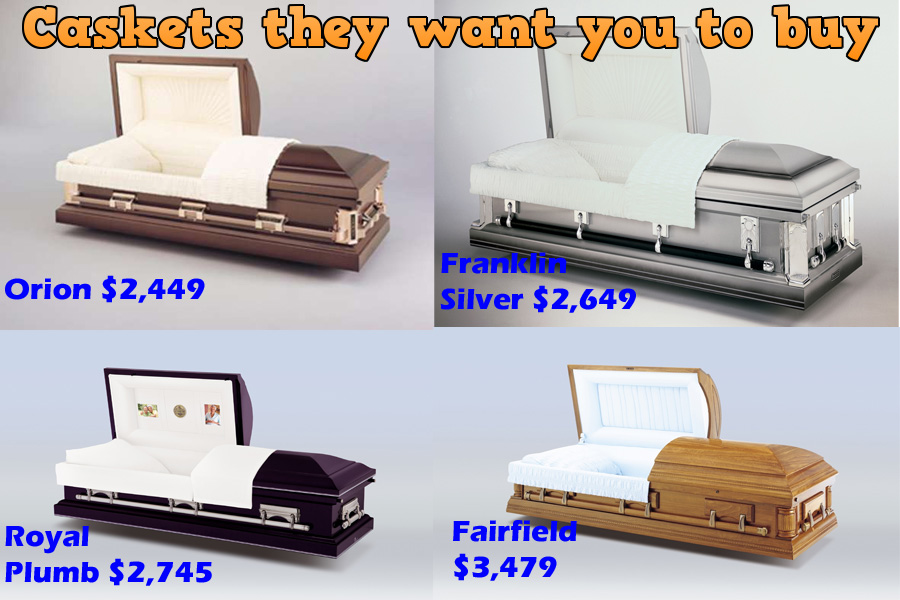
Caskets pictured above are the "low end" carbon steel (not "stainless") and wood from the list below.
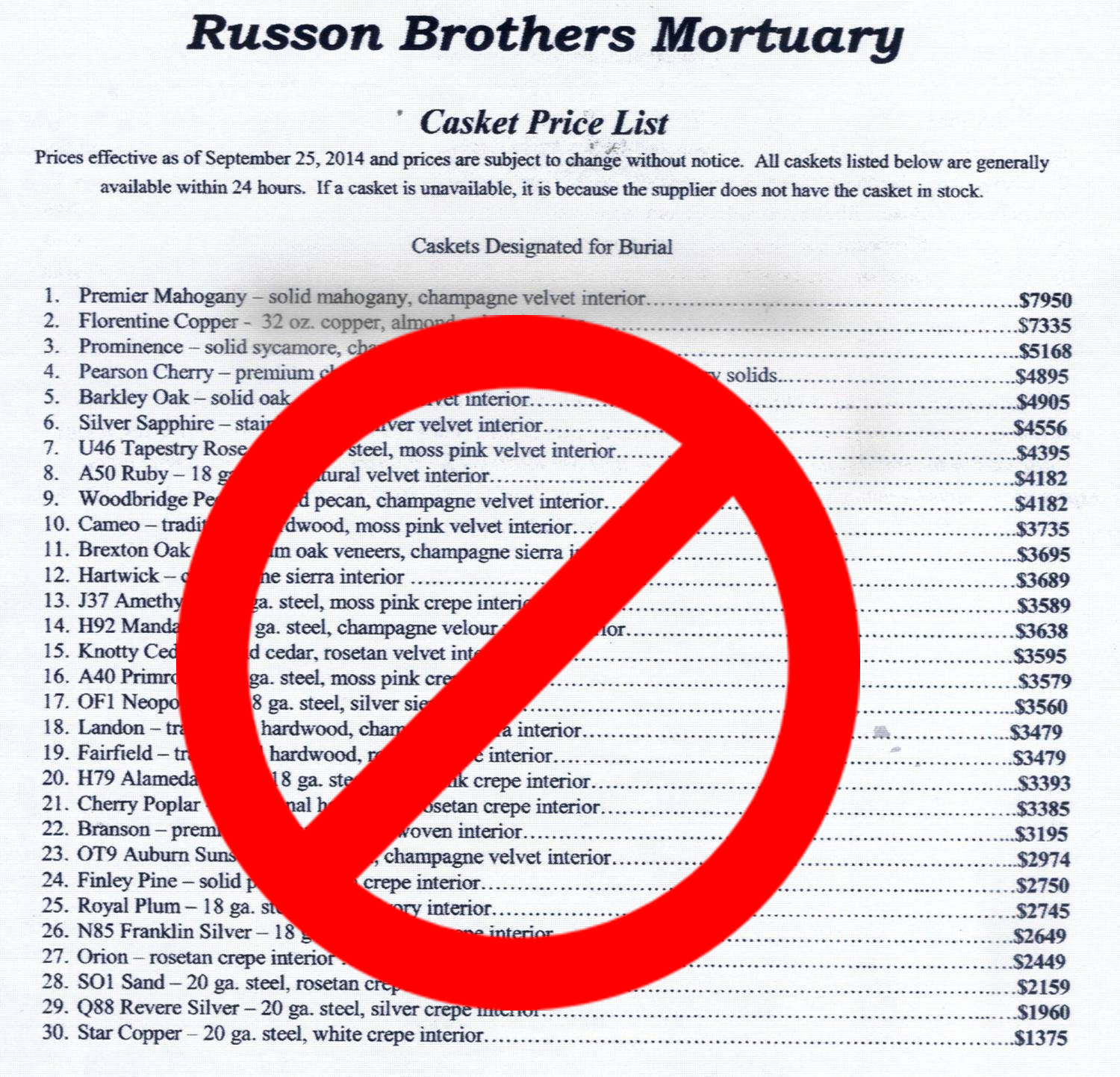


Some other casket lists you may want to study:

Jenkins-Soffe
Lindquist Mortuary
Goff Mortuary
Premier Funeral Services
Walmart
Costco
Legacy Funerals and Cremations
If the total cost for the casket you want with a package of services combined is more than $5,000, you are looking at an EXPENSIVE FUNERAL HOME. If you still don't own a burial plot, $6,000 will cover it all.

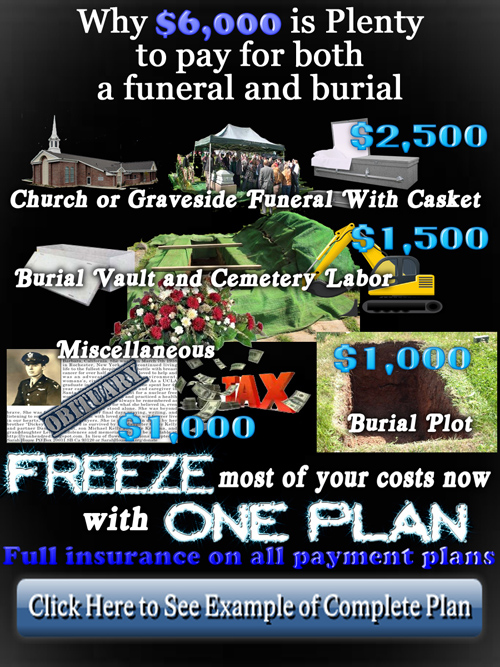
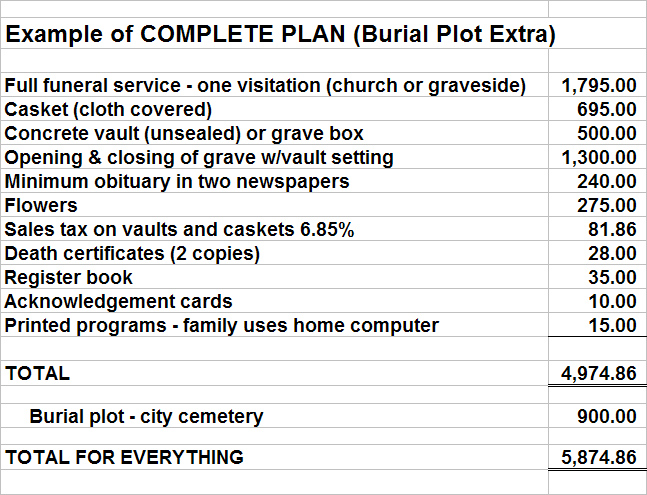
All the caskets below are under $1,600, and your cost can be frozen with either a single cash payment or on a payment plan up to ten years when purchased with a funeral service.


















